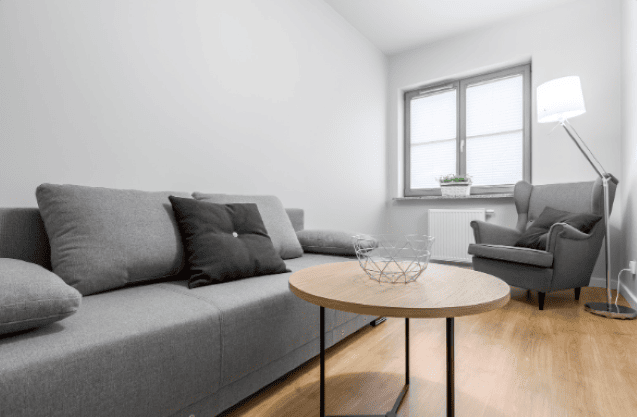
Imagine working from the comfort of your tiny house, where every corner is a reflection of your personality and every inch is optimized for your convenience. While the idea of a tiny house brings images of simplicity and minimal living, creating a workspace in such a compact area requires creativity and strategic planning. This guide will provide you with practical tips and innovative ideas to transform a small corner of your tiny house into an efficient work-from-home paradise.
Designing Your Workspace
- Identify the Right Spot: Choose a location in your tiny house that is quiet and receives natural light. It could be near a window or in a loft area. The key is to find a space that feels separate from your living areas to maintain a work-life balance.
- Multi-functional Furniture: Invest in furniture that serves multiple purposes. A fold-down desk, for example, can be tucked away when not in use. Similarly, a wall-mounted shelf can serve as a desk and storage space.
- Ergonomic Comfort: Prioritize comfort to boost productivity. A comfortable chair that supports your posture is essential. If space allows, consider a compact ergonomic chair that doesn’t take up much room.
- Maximize Vertical Space: Utilize your walls for storage. Floating shelves or wall organizers can store office supplies without consuming floor space.
- Natural Light and Ventilation: Position your workspace where you can benefit from natural light and fresh air. This not only reduces electricity usage but also enhances your mood and energy levels.
- Minimalist Design: Keep your décor simple and clutter-free. A minimalist approach reduces distractions and makes your space feel larger and more open.
Technology and Connectivity
- Compact Tech Solutions: Choose laptops and portable devices over bulky desktop computers. Smaller, wireless gadgets help in maintaining a clean and organized space.
- Strong Internet Connection: Ensure your tiny house has a reliable internet connection, essential for seamless work-from-home experiences. Consider a Wi-Fi booster if needed.
- Cable Management: Use cable organizers to keep wires from tangling and cluttering your space. This not only looks neater but also makes it easier to move things around when necessary.
Personalizing Your Space
- Incorporate Personal Touches: Add elements that make the space feel like your own, such as family photos, inspirational quotes, or a small plant. These personal touches can boost your mood and productivity.
- Color Psychology: Use colors that stimulate focus and creativity. Soft blues or greens are known for their calming effects and can enhance concentration.

Challenges and Solutions
- Limited Space: The biggest challenge in a tiny house is the limited space. Optimize every inch by using foldable or multi-functional furniture and vertical storage solutions.
- Noise and Distractions: If your tiny house is in a busy area or you share it with others, noise can be a concern. Consider noise-canceling headphones or create a makeshift barrier to minimize distractions.
- Lighting: Inadequate lighting can strain your eyes. Apart from natural light, add task lighting like a desk lamp to ensure your workspace is well-lit.
Optimizing Space and Workflow
- Smart Storage Solutions: Think beyond traditional storage. Use under-the-desk drawers or hanging organizers to keep your essentials at hand. Magnetic boards or pegboards can be a creative way to organize and display tools or notes.
- Workflow Efficiency: Arrange your workspace in a way that complements your workflow. Keep frequently used items within arm’s reach and store rarely used items out of the way.
Staying Organized and Productive
- Routine and Discipline: Establish a routine to separate work hours from personal time. This is crucial in a tiny house where your bed, kitchen, and workspace are in close proximity.
- Declutter Regularly: In a small space, clutter accumulates quickly and can become overwhelming. Schedule regular decluttering sessions to maintain a clean and efficient workspace.
- Time Management Tools: Utilize digital tools or planners to keep track of tasks and deadlines. This helps in staying focused and managing your time efficiently.

Overcoming Isolation
- Stay Connected: Working from a tiny house can sometimes feel isolating. Make an effort to stay connected with colleagues and friends through virtual meetings or coworking spaces.
- Outdoor Breaks: Take advantage of your surroundings. Step outside for fresh air and a change of scenery, which can be invigorating and boost creativity.
Health and Well-being
- Ergonomic Practices: Prevent strain and injury by ensuring your workspace is ergonomically set up. Your screen should be at eye level, and your feet should rest flat on the ground.
- Regular Breaks: Take short breaks to stretch and move around. This not only prevents physical strain but also helps in maintaining mental clarity.
Conclusion
Creating a work-from-home space in a tiny house might seem daunting at first, but with the right strategies and a bit of creativity, it’s entirely possible. By choosing the right spot, investing in multi-functional furniture, and adding personal touches, your tiny house can transform into a productive and inspiring workspace. Remember, the goal is not just to fit everything in but to create a space that supports your work and well-being. Embrace the unique challenges of tiny house living and let your creativity flow as you design a workspace that is uniquely yours.






